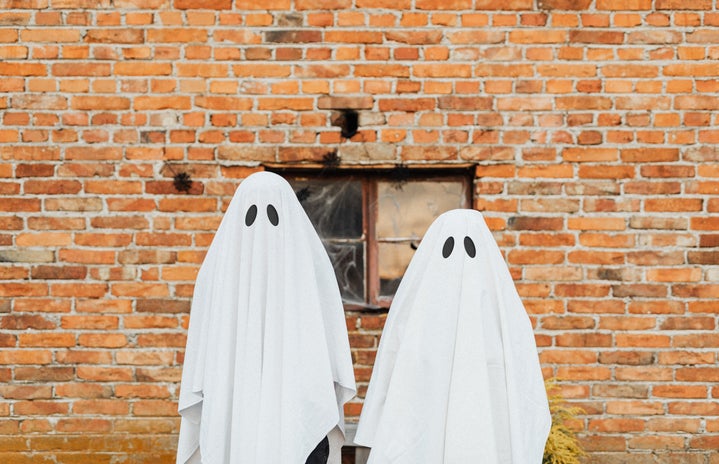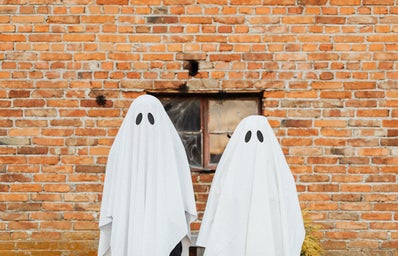Every year people around the world celebrate Halloween on October 31st. But what is the origin of that celebration? The earliest record of the festival of Halloween comes from the Celtic festival Samhain (1000 BCE). Here the people celebrated the last day of summer and of the harvest season and the beginning of the new year, which occurred on November 1. The occurrence of these two events marked a period that symbolized both death and rebirth. For this reason, they believed that, on this day, the spirits of the dead visited the earth because the boundary between the living and the dead became blurred. The celts also wore costumes made of animal fur and heads to confuse the visiting spirits.
After the Roman invasion of the Celts in 43 AD, Samhain was combined with the Roman festival Feralia, which was a day for people to remember their deceased ancestors. This was part of an eight day festival for honoring deceased family members, with Feralia being held on the last day. This would continue for centuries, until the influence of Christianity spread into both Celtic and Roman lands.
As a way to replace many Celtic festivals, in the 9th century, Pope Gregory III stated that November 1st was All Saints Day or All Hallows Day— hallow meaning “holy person, saint,”. It was a day to celebrate and remember all of the saints and martyrs in christian history. The day before became known as All Hallows Eve, coming from the Scottish phrase “All Hallows E’en” (e’en being a contraction used to refer to the evening before feast or saints’ days). Much later, the phrase would become Hallowe’en or Halloween.
November 2nd was declared by the Catholic Church as All Souls Day in 1000AD as a day to honor the dead. On these days, the poor would go to the homes of the rich to pray for the soul of the resident’s deceased family member. In return for their prayer, they would receive a small cake as a payment. Others, in places like Scotland and Ireland, would go dressed up in costume and go to different households and sing songs, recite poems or tell a joke; they received nuts, fruits or coins in return.
This festival would reach the United States first with European settlers. In Colonial America, Halloween was not well celebrated since the colony was strictly Protestant. As time went by, they started to accept the festival and began to celebrate it. They did this by sharing stories of the dead, telling ghost stories, and celebrating the harvest by dancing and singing. With Irish immigration in the 1800s due to a potato famine, Halloween would really gain popularity nationwide. During this time, people would begin to dress up and do some of the traditions they did in Europe, such as go to different households and ask for food or money. This would become our modern-day trick or treating tradition. The first recorded trick or treat in the United States would occur in 1911.
At the beginning of the 20th century, Halloween had lost many of its religious and superstitious aspects. Instead the festival became much more community centered and, to celebrate it, different towns hosted parties and parades. Despite this, another tradition from Europe persisted: pranks and tricks. In the 1800s, most of the pranking was innocent, and most occurred in rural places and were carried out by young boys. They would prank people by putting a farm’s animals and wagons on the roof, taking out vegetables from gardens, and removing gates from their hinges.
But as Halloween moved from the rural to the urban, these pranks became more dangerous and destructive. Boys would start fires, break windows, and throw bags of flour or stockings filled with ashes at people. By the 1930s, Halloween had become so dangerous that many cities considered banning it. During this decade, many organizations made different activities, such as parties, carnivals, and parades to keep kids out of trouble. Halloween would take a pause due to World War II and sugar rations.
By the end of the War and the beginning of the 1950s, Halloween pranks or tricks became much more tamer. Along with the rise of the Baby Boomer generation, Halloween became directed towards younger children. The activity of trick or treating became popular again, as a way for not only the whole family to enjoy Halloween, but also to prevent tricks from occurring. The treat of choice became candy, since companies, wanting to make a profit from the activity, manufactured smaller versions of their candies so that they would be handed out on Halloween.
With the popularity of television, children wore costumes that many people recognized. In the 50s the costumes would be based on Disney characters, and in the 60s the costumes were about characters like the Addams Family and the Beatles. But the late 70s costumes would take a shift into gory with the release of the slasher film Halloween in 1978.
Today most families celebrate Halloween by wearing a costume and going trick or treating. Some people also like to celebrate the day by attending parties or visiting Haunted Houses with friends and families, while others may prefer to stay in their homes and watch horror films. Whatever people decide to do on that day, remember that, when celebrating Halloween, make sure that it is in a safe way that does not harm others. That way we can all have fun!


